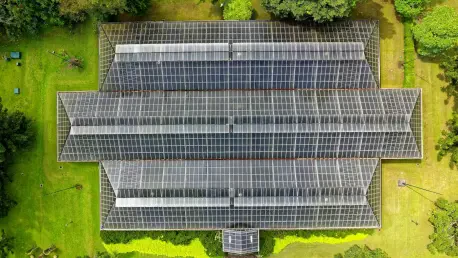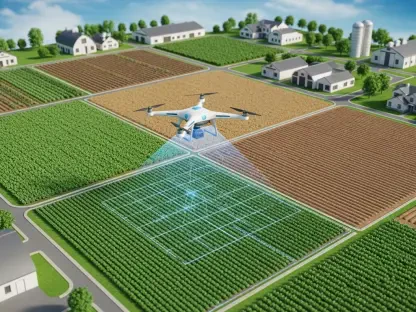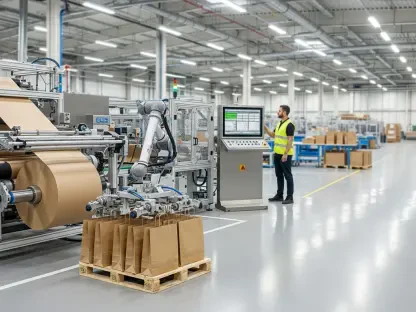In a world where sustainable agriculture faces mounting challenges from high energy costs and environmental concerns, a family-run operation in Cypress County, Alberta, is making waves with a groundbreaking approach to greenhouse technology. Big Marble Farms has secured a substantial $2.2 million in funding to integrate cutting-edge solutions that promise to transform the way greenhouses operate, balancing economic viability with ecological responsibility. This initiative, centered on advanced horticultural lighting, is not just a step forward for the farm but a potential blueprint for the broader agricultural sector. By tackling the dual issues of operational expenses and carbon emissions, the project highlights how innovation can address pressing needs in food production. The implications of this development extend beyond local boundaries, offering a glimpse into a future where technology and sustainability converge to ensure year-round access to fresh produce.
Energy Efficiency Through Innovative Lighting
At the heart of this transformative project lies the installation of over 5,000 state-of-the-art horticultural grow lights, designed to slash energy consumption while boosting crop productivity at Big Marble Farms. This technology is projected to save the farm nearly $2 million annually in utility costs, a significant relief for an industry often burdened by high operational expenses. Beyond financial benefits, these lights are expected to cut greenhouse gas emissions by 4,600 tons each year, aligning with global efforts to combat climate change. The new system delivers up to 45% more light than the farm’s existing setup, enabling higher yields without a corresponding spike in energy use. For a farm managing over 496,000 cucumber plants and 385,000 tomato plants, such efficiency is a game-changer, ensuring that resources are maximized to meet the growing demand for local produce in Alberta and beyond. This strategic upgrade underscores a shift toward smarter, more sustainable agricultural practices that prioritize both profit and planet.
The impact of this lighting technology extends into the operational fabric of Big Marble Farms, reshaping daily practices and long-term planning. Staff training on energy reduction techniques accompanies the installation, ensuring that the full potential of the new system is realized through skilled implementation. This focus on human capital complements the technological investment, creating a holistic approach to energy management. The farm’s ability to maintain high production levels—already supported by 47,000 grow lights—will be further enhanced, securing its position as a key supplier of fresh vegetables in western Canada. Moreover, the reduction in energy costs frees up resources for reinvestment into other areas of innovation or expansion. This initiative demonstrates how targeted technological advancements, paired with practical training, can build resilience in an industry often vulnerable to fluctuating energy prices and environmental regulations, paving the way for broader adoption across similar operations.
Collaborative Funding and Broader Implications
The $2.2 million investment in Big Marble Farms is facilitated through the Strategic Energy Management for Industry Program, a collaborative effort between the Alberta government and Natural Resources Canada. This program, which covers up to 50% of eligible project costs for for-profit organizations, reflects a commitment to fostering energy efficiency across sectors like agriculture, mining, and manufacturing. With applications open until March 2027, the initiative signals a sustained push toward modernizing industries with high environmental footprints. For greenhouse operators like Big Marble Farms, this funding alleviates the financial burden of adopting advanced technologies, making sustainability an achievable goal rather than a distant ideal. Government officials, including Alberta’s Minister of Environment and Protected Areas, Rebecca Schulz, have lauded the project for its role in reducing costs and delivering more locally grown produce, highlighting its alignment with regional priorities for economic and ecological progress.
Beyond the immediate benefits to Big Marble Farms, this project carries significant implications for Alberta’s agricultural landscape and its global reputation. Industry leaders and local representatives, such as Cypress-Medicine Hat MLA Justin Wright, view the initiative as a catalyst for job creation and economic growth, positioning the province as a hub for innovative farming practices. The dual focus on cutting emissions and enhancing food security resonates with broader trends in agriculture, particularly in regions with harsh climates where year-round cultivation poses unique challenges. Emissions Reduction Alberta CEO Justin Reimer has emphasized the project’s wider impact, describing it as a triumph for community, economy, and environment. By showcasing how technology can address critical issues in food production, this endeavor could attract more greenhouse businesses to Alberta, fostering a competitive edge in sustainable agriculture and inspiring similar innovations in neighboring regions and beyond.
A Model for Sustainable Agricultural Growth
Looking back, the strides made by Big Marble Farms through this $2.2 million investment marked a pivotal moment in redefining greenhouse operations. The adoption of energy-efficient horticultural grow lights not only curbed operational costs but also significantly lowered the farm’s carbon footprint, setting a high standard for environmental stewardship. This achievement served as a testament to the power of collaboration between government programs and private enterprises in driving meaningful change. As other operators took note, the farm’s success offered a replicable framework for integrating technology to enhance productivity and sustainability. Moving forward, the focus should shift to scaling such initiatives, encouraging more farms to tap into available funding and resources. Exploring additional innovations, like automated systems or renewable energy integration, could further amplify these gains. Ultimately, building on this foundation will be crucial to ensuring that agriculture remains both competitive and conscientious in meeting future food demands.









